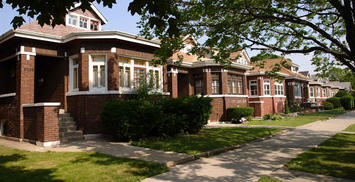
So last month I saw an article in the New York Times about the resurfacing of a video documenting a racist attack on black children in Rosedale, Queens in New York City in 1975. A group of black kids from a nearby neighborhood decided to go on a "bike hike" through surrounding neighborhoods. Little did they know they would stumble on a protest against black movement into the area. When they were spotted by the white protesters, they were surrounded, accosted and chased out of the neighborhood. The Times caught up with the black kids from that period, 45 years later, and they say the pain and hurt of that incident resonates to this day. The Times tried to catch up with white residents who were part of the assault, but no one would speak publicly, or identify the offending participants.
Reading that story reminded me of three things. First, my wife experienced something almost exactly like this in Chicago's Ukrainian Village neighborhood in 1980, at just 10 years old. She feels lucky to have gotten away. Second, the virulent racism that we associate with long ago really wasn't -- isn't -- that long ago. Third, Rosedale sounds like it shares a history with many other neighborhoods in cities across the nation.
Welcome to Marquette Park.
Marquette Park, or Chicago Lawn, as it's also known, is a Southwest Side neighborhood in Chicago. The park for which the neighborhood is named is a 323-acre park that is one of the largest in the city. It opened in 1913. The community sprouted during the 1920s to become a classic Chicago "Bungalow Belt" neighborhood. It's historically been a white ethnic middle class and working class community that housed workers employed by the stockyards and factories to the east. Marquette Park was initially settled by Germans and Irish prior to the Depression, and Poles and Lithuanians after World War II.
The 1960s ushered in a troubled time for Marquette Park. During that decade the neighborhood's population was bursting at the seams as white flight from the Englewood and West Englewood neighborhoods just to the east swooped in. As Marquette Park grew, it sought to draw a hard line at the Norfolk Southern railroad tracks that defined the eastern boundary of the neighborhood, a few blocks east of Western Avenue. The message? Black people must cross into our neighborhood at their own peril.
In 1966, Martin Luther King and hundreds of civil rights protesters marched in Chicago's Marquette Park neighborhood on the South Side to push for open housing laws. King and the protesters were met with an angry mob of white residents who numbered in the thousands. They rocked cars, shouted obscenities, carried vile signs, and threw bricks and stones. King was actually struck in the head by a rock. King later said he had not encountered worse hate and violence, even compared to Mississippi and Alabama, than he did in Chicago.
Read the rest of this piece at Corner Side Yard Blog.
Pete Saunders is a writer and researcher whose work focuses on urbanism and public policy. Pete has been the editor/publisher of the Corner Side Yard, an urbanist blog, since 2012. Pete is also an urban affairs contributor to Forbes Magazine’s online platform. Pete’s writings have been published widely in traditional and internet media outlets, including the feature article in the December 2018 issue of Planning Magazine. Pete has more than twenty years’ experience in planning, economic development, and community development, with stops in the public, private and non-profit sectors. He lives in Chicago.
Photo: Chicago-style bungalows in the Marquette Park neighborhood. Source: lisc-chicago.org












